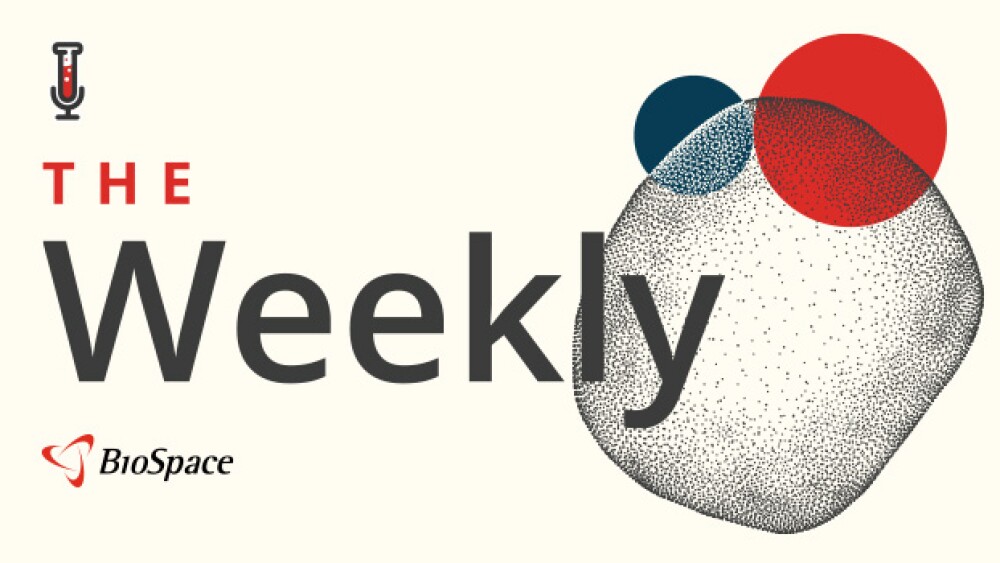INDIANAPOLIS, Jan. 31, 2012 /PRNewswire/ --
- Fourth quarter revenue declined two percent driven by Zyprexa and Gemzar patent expirations, partially offset by growth in other products.
- Fourth quarter earnings per share were $.77 (reported), or $.87 (non-GAAP).
- Full-year 2011 revenue grew five percent, topping $24 billion, as seven pharmaceutical products and the company's animal health business all exceeded $1 billion in annual sales.
- Full-year 2011 earnings per share totaled $3.90 (reported), or $4.41 (non-GAAP).
- 2012 earnings per share guidance reconfirmed to be in the range of $3.10 to $3.20.
Eli Lilly and Company (NYSE: LLY) today announced financial results for the fourth quarter and full year of 2011.
$ in millions, except per share data | Fourth Quarter | % | Full Year | % | ||||
2011 | 2010 | Growth | 2011 | 2010 | Growth | |||
Total Revenue Reported | $6,046.6 | $6,187.0 | (2)% | $24,286.5 | $23,076.0 | 5% | ||
Net Income Reported | 858.2 | 1,169.6 | (27)% | 4,347.7 | 5,069.5 | (14)% | ||
EPS Reported | 0.77 | 1.05 | (27)% | 3.90 | 4.58 | (15)% | ||
Net Income non-GAAP | 968.9 | 1,234.9 | (22)% | 4,913.5 | 5,240.8 | (6)% | ||
EPS non-GAAP | 0.87 | 1.11 | (22)% | 4.41 | 4.74 | (7)% | ||
Financial results for 2011 and 2010 are presented on both a reported and a non-GAAP basis. Reported results were prepared in accordance with generally accepted accounting principles (GAAP) and include all revenue and expenses recognized during the period. Non-GAAP results exclude the items described in the reconciliation tables. The non-GAAP results are presented in order to provide additional insights into the underlying trends in the company's business. The company's 2012 financial guidance is also being provided on both a reported and a non-GAAP basis. The company has consulted with its external auditors on the proper accounting treatment for the termination of Lilly's alliance with Amylin Pharmaceuticals. Given the complexity of this transaction, Lilly decided to proactively consult with the U.S. Securities and Exchange Commission (SEC) on its accounting treatment. While the accounting treatment would not have any effect on the underlying cash flows or economics of the transaction, it is possible that this consultation could lead to material changes in Lilly's 2011 reported results as well as to its 2012 guidance. Lilly is working with the SEC to conclude this review process prior to filing its next Form 10-K.
"Lilly's fourth quarter results not only reflect the impact of recent patent expirations, but also highlight the growth opportunities that will enable us to remain a strong and successful company in the years ahead," said John C. Lechleiter Ph.D., Lilly's chairman, president and chief executive officer. "Although we anticipated the sales erosion in the fourth quarter resulting from the loss of U.S. patent exclusivity for Zyprexa in late October, I am encouraged by the strong performance of many other areas of our business. Products such as Cymbalta, Humalog, Humulin, Forteo, Alimta, Cialis and our animal health portfolio all demonstrated solid growth in the quarter, as did key regions including Japan and the emerging markets. With continued growth in these areas, along with a late-stage clinical pipeline that now features a dozen potential new medicines in Phase III, Lilly is well-positioned to deliver on our innovation-based strategy and create long-term value for all of our stakeholders."
Derica Rice, chief financial officer and executive vice president of global services, added, "By the end of 2011, Lilly had either met or exceeded several of the strategic goals we had previously outlined for the investment community. Since mid-2009, we have removed over $1 billion from our projected expense base and reduced more than 5,500 positions from our workforce through prudent cost containment and productivity initiatives. In addition, the 12 molecules currently in Phase III surpassed our goal of 10 by the end of 2011. We remain focused on delivering on our commitments."
Key Events Over the Last Three Months
- U.S. patent protection for Zyprexa® ended on October 23, 2011, resulting in the entry of generic competition. An agreement was reached with Prasco Laboratories to supply an authorized version of olanzapine.
- Lilly announced an agreement with Amylin Pharmaceuticals to end the exenatide alliance and the outstanding litigation between the companies. As part of the agreement, the parties will transition full responsibility for the worldwide development and commercialization of exenatide to Amylin, starting in the United States on November 30, 2011, and progressing to all markets no later than the end of 2013.
- The U.S. Food and Drug Administration (FDA) approved Amylin Pharmaceutical's Bydureon as an adjunct to diet and exercise to improve glycemic control in adults with type 2 diabetes.
- The company signed an agreement to acquire ChemGen Corp., a privately-held bioscience company specializing in the development and commercialization of innovative feed enzyme products that improve the efficiency of poultry, egg, and meat production.
- An independent Data Monitoring Committee (DMC) recommended that Lilly continue the two ongoing Phase III randomized pivotal trials for solanezumab without modifications, based on pre-planned interim safety and futility analyses. The DMC also recommended that Lilly make a protocol modification to EXPEDITION-XT, the open-label extension study of the two Phase III trials, making the protocol for the open-label extension more consistent with the current protocol for the pivotal studies.
- The European Commission granted approval for the use of Alimta® as a single agent for continuation maintenance therapy in patients with advanced nonsquamous non-small cell lung cancer after initial treatment with Alimta plus cisplatin.
- The FDA granted approval for the use of Erbitux® in combination with chemotherapy as a first-line treatment for recurrent metastatic squamous cell carcinoma of the head and neck.
- The company announced the withdrawal of Xigris® in all markets following results of the PROWESS-SHOCK study, which did not meet the primary endpoint of a statistically significant reduction in 28-day all-cause mortality in patients with septic shock.
- The FDA approved Jentadueto, a new tablet combining linagliptin and metformin. Jentadueto is a prescription medication used along with diet and exercise to improve glycemic control in adults with type 2 diabetes when treatment with both linagliptin and metformin is appropriate.
Fourth-Quarter Reported Results
In the fourth quarter of 2011, worldwide total revenue was $6.047 billion, a decrease of 2 percent compared with the fourth quarter of 2010. This 2 percent revenue decrease was comprised of a decrease of 11 percent due to price, partially offset by an increase of 8 percent in volume and an increase of 1 percent due to the impact of foreign exchange rates. The increase in volume and reduction in price were significantly driven by the loss of U.S. patent exclusivity for Zyprexa in October 2011 and the agreement with Prasco Laboratories to supply an authorized version of olanzapine. Total revenue in the U.S. decreased 4 percent to $3.281 billion due to the loss of patent exclusivity for Zyprexa and, to a lesser extent, the loss of patent exclusivity in November 2010 for Gemzar®. Total revenue outside the U.S. remained flat at $2.765 billion due to increased volume and the positive impact of foreign exchange rates, offset by lower prices. Fourth-quarter 2011 total revenue was reduced by approximately $80 million due to the impact of U.S. health care reform.
Gross margin decreased 4.6 percent to $4.725 billion in the fourth quarter of 2011. Gross margin as a percent of total revenue was 78.1 percent, reflecting a decrease of 2.0 percentage points compared with the fourth quarter of 2010. The decrease in gross margin percent was due to lower sales of Zyprexa, and to a lesser extent Gemzar, following patent expirations.
Total operating expense, defined as the sum of research and development, marketing, selling and administrative expenses, increased 2 percent compared with the fourth quarter of 2010. Marketing, selling and administrative expenses increased 7 percent to $2.133 billion driven primarily by the diabetes collaboration with Boehringer Ingelheim, as well as approximately $45 million due to the mandatory pharmaceutical manufacturers' fee associated with U.S. health care reform. Research and development expenses decreased 6 percent to $1.355 billion, or 22 percent of total revenue, as fourth quarter 2011 ongoing expenses related to the diabetes collaboration with Boehringer Ingelheim and other late-stage clinical trial costs were more than offset by higher fourth quarter 2010 charges related to business development activities and termination of clinical trials.
In the fourth quarter of 2011, the company recognized a charge of $167.6 million for asset impairments, restructuring and other special charges, including a special charge of $85.0 million related to the withdrawal of Xigris and $82.6 million related to previously announced strategic actions that the company is taking to reduce its cost structure and global workforce. In the fourth quarter of 2010, the company recognized a restructuring charge of $79.0 million, primarily related to the previously announced strategic actions.
Operating income in the fourth quarter of 2011 was $1.069 billion, a decrease of 26 percent compared to the fourth quarter of 2010, due primarily to lower gross margin; increased asset impairment, restructuring, and other special charges; and increased marketing, selling and administrative expenses, partially offset by lower research and development expenses.
Other income (expense) was a net expense of $26.8 million, compared to net expense of $39.4 million in the fourth quarter of 2010. The decrease in fourth quarter 2011 other expense was driven by lower foreign exchange rate losses.
The effective tax rate was 17.6 percent in the fourth quarter of 2011, compared with an effective tax rate of 17.0 percent in the fourth quarter of 2010. The effective tax rate for the fourth quarter of 2011 reflects the deductibility of asset impairments, restructuring and other special charges during the quarter, while the effective tax rate for the fourth quarter of 2010 reflects the retroactive extension of the R&D credit in that quarter.
Net income and earnings per share decreased to $858.2 million and $.77, respectively, compared with fourth-quarter 2010 net income of $1.170 billion and earnings per share of $1.05. The decreases in net income and earnings per share were primarily driven by lower operating income.
Fourth-Quarter 2011 non-GAAP Results
On a non-GAAP basis, fourth quarter 2011 operating income decreased 19 percent to $1.236 billion, due to lower gross margin and increased marketing, selling and administrative expenses, partially offset by increased research and development expenses. The effective tax rate was 19.9 percent. Net income and earnings per share both decreased 22 percent, to $968.9 million and $.87, respectively. These decreases were primarily driven by lower operating income. Excluding the impact of changes in foreign exchange rates, earnings per share would have decreased approximately 23 percent.
For purposes of non-GAAP reporting, items totaling $.10 and $.06 per share in the fourth quarters of 2011 and 2010, respectively, have been excluded. For further detail, see the reconciliation below as well as the footnotes to the non-GAAP income statement later in this press release.




